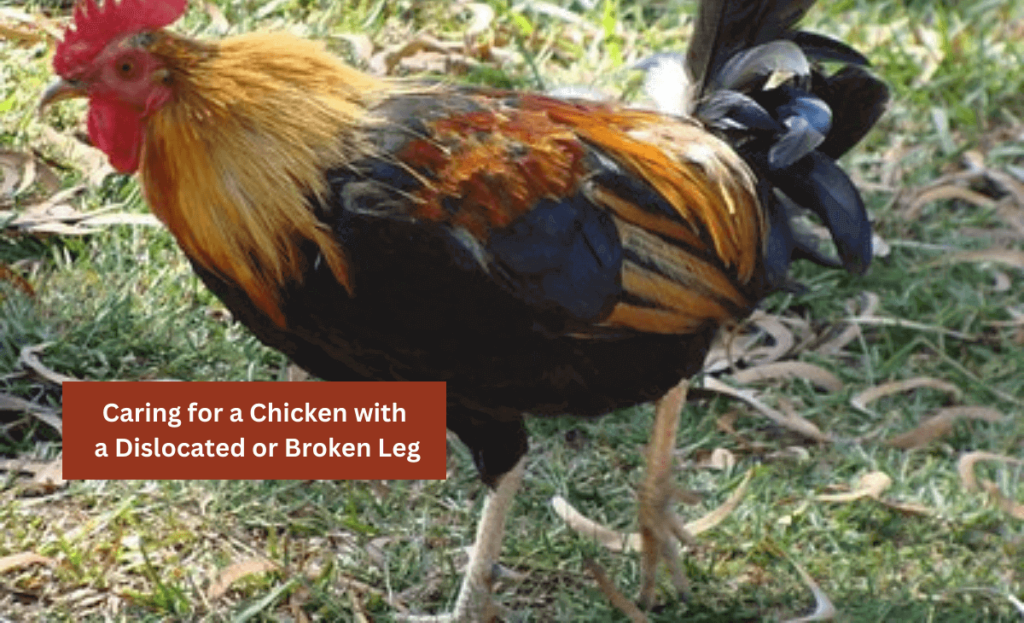There are many things that can go wrong with a chicken’s leg. The most common problem is a broken or dislocated leg. Chickens with this condition need to be cared for properly to heal. Without it, their mobility will suffer greatly, resulting in their inability to stand on one foot. This will make them uncomfortable and make them less likely to lay eggs.
Here’s a complete guide if you want to know more about the signs of dislocations in chickens and how to nurse a chicken with dislocated leg.
Dislocated chicken legs: what causes them?
Broken or dislocated legs are common in chickens and chicks. Obviously, they love foraging and exploring, so bad things can happen to their legs. Here are the following causes for your chicken’s broken leg.
Injuries
There are a lot of things that can hurt a chicken during the course of their daily activities, as they are very active creatures.
Nesting
Many chickens dig their nests and sit in them until they’re ready to lay their eggs. If the hole is too deep, the chicken can end up with a broken, fractured, or dislocated leg.
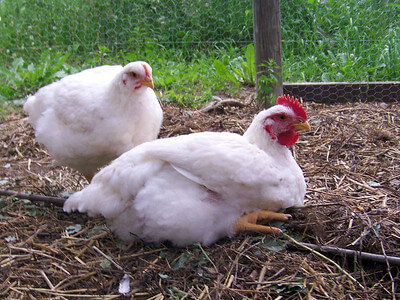
Nutritional deficiencies
Young chicks can get malnourished if they don’t get enough nutrients or calcium. It can lead to weak bones and joint problems, eventually resulting in a broken bone, particularly in the hock joint. In order to have a healthy immune system, they all need extra nutrition like vitamins B, E, and D3.
Infections
Dislocation in one leg can also happen from infections in the bones or joints.
Predators
When a predator attacks a chicken, the leg can get dislocated. This is a big deal for a young bird with a fragile body.
How do you know if a chicken has a dislocated leg?
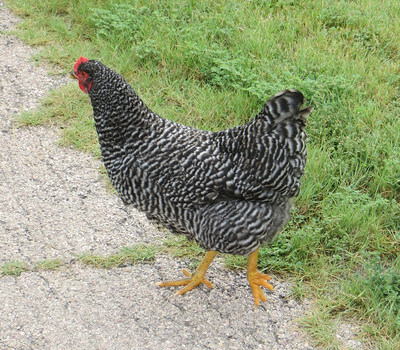
If you’re a chicken keeper, you already know the signs that indicate your chickens may have leg injuries. Regardless, it is important to remember that the signs of a dislocated leg may not be as obvious. So, here’s a list for you to determine whether your birds have dislocated legs:
- The chicken is holding the affected leg up and not bearing any weight on it
- The foot of the affected leg is bent in an abnormal direction
- There is visible swelling in the joint
- There may be bruising around the joint
- The leg may feel warm to the touch
- The chicken is often squatting on the floor
- The chicken appears to be losing its appetite
Keeping an eye on the chickens is crucial to catching any problems early. Chickens with any of these obvious signs must be treated immediately. You can get an x-ray if you think there’s nerve damage. The faster it’s diagnosed, the better chance the chicken has of regaining movement in that leg and foot.
What do you do for a chicken with an injured leg?

If you find that your chicken has an injured leg, the first thing you should do is to confine it. It means putting it in a small space, like a box or cage, where it cannot move around much. This way, you can prevent further injury and make it easier for you to care for the chicken.
The next thing you should do is clean the wound to prevent infection. You can use mild soap and warm water for this. Be sure to rinse the wound well.
Once the wound is clean, you can apply a bandage to keep the wound clean and protected. Check the bandage regularly and change it if it gets dirty.
How can you set back a chicken with dislocated legs?

You will need to reduce the dislocation by putting the leg back into its proper place. To do this, you will need to hold the chicken still and gently push the leg back. You may need someone to help you with this.
Once the leg is back in place, you will need to splint it. In other words, putting something on either side of the leg to hold it in place. You can do this with cloth strips or commercial chicken leg splints. Make sure the splint is clean and changed regularly.
The chicken will need to be confined and restricted for a couple of weeks and not be allowed to roam freely or engage in strenuous activity. After this, you can gradually increase the chicken’s activity level.
You will still need to check the leg regularly to ensure it is healing properly. You will need to take the chicken to the vet if you see any infection.
Will a chicken’s broken leg heal on its own?
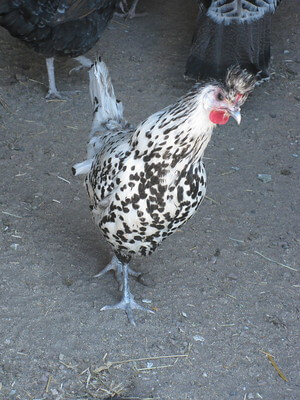
Chicken legs that have been broken or dislocated can heal on their own if they are mildly injured. The chicken usually starts working normally again a day or two after the leg heals. However, when the injury is more severe, such as a compound fracture, it is advisable to seek professional medical help.
If the injury is left untreated, it can lead to further problems such as an infection or arthritis. Have some hope that even if your chickens’ leg is not in the best condition and they are in pain, there are still some options to help them feel better.
How long does a broken chicken leg take to heal?
In terms of the healing process of a broken chicken leg, it depends on how bad it is. It can take a day or one week to a few weeks. And in some cases, it can take 4-6 weeks for a broken or dislocated chicken leg to heal completely.
How can I prevent my chicken from getting a broken leg?
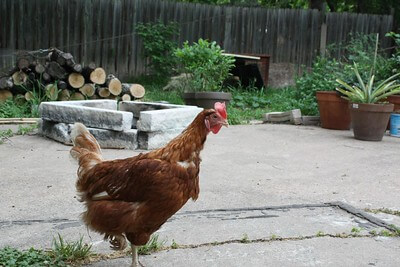
The following are ways you can do to prevent your chicken from getting a broken leg:
1. Keep your chicken coop clean and free from debris to prevent your chicken from tripping and injuring itself.
2. Provide your chicken with plenty of space to move around to reduce the risk of injuring either one of its legs.
3. Ensure your chicken has access to plenty of food and water. This effort will help to prevent malnutrition, which can lead to bone weakness and an increased risk of injury.
4. Inspect your chickens’ legs regularly for any injury or illness. This is vital to catch any problems early and treat them before they become serious.
Can a hen survive with one leg?
A hen can survive with one leg. However, it will be difficult for the hen to get around and will likely need your help to eat and drink. The hen will also be at increased risk of injury pain, and infection. Therefore, providing the appropriate care for a hen with only one leg is a must.
Generally, chickens can live for several weeks or even months with broken or dislocated legs. But they will likely have a reduced quality of life and may not be able to recover fully. Other chickens might not make it. Therefore, it is a good idea to consult a vet right away.
How do you nurse a chicken back to health?
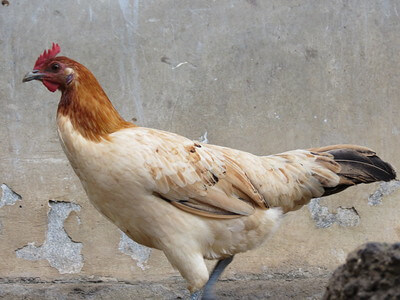
If your chicken becomes injured or ill, you must provide it with the highest level of care to ensure its fast recovery. To do this, it is necessary to keep the chicken warm, dry, and protected from predators.
You will also need to ensure that the chicken has access to food and water. If the chicken is not eating or drinking, you may need to force-feed it. In some cases, you may also need to give the chicken medication.
Watch your chicken’s progress closely so you can be assured it will heal properly. You will need to take the chicken to the vet if you see any signs of infection, such as redness, swelling, or discharge.
Conclusion
In addition to being uncomfortable, chickens who suffer from dislocated legs may also suffer from anxiety. Chicken might have trouble eating and drinking and is at risk of further injury. The first thing you can do is act quickly if you notice your chicken with a dislocated leg. The sooner you get your chicken treated, the better.
FAQs
Can chickens dislocate their hip?
Chickens can dislocate their hips. Some people are not aware of it. This usually happens because they get injured, have nesting problems, or are nutrition deprived. It’s also possible for them to develop an infection in this joint which will cause you some serious worries if left untreated.
Should I Keep My Chicken separate from the rest of the flock?
It is a good idea to keep your chicken separate from the rest of the flock until it fully recovers. This will help prevent the spread of infection and give the chicken time to rest and heal.
What should I do if my chicken won’t eat or drink?
If your chicken is not eating or drinking, you must force-feed it. You can use a syringe or dropper to give the chicken small amounts of food or water. Make sure it has access to fresh food and water at all times. You can add vitamins to their diet to help them stay strong.
How often should I check on my chicken?
You should check on your chicken at least once daily to ensure it is healing properly. Also, check for any signs of infection or they are in pain. You should take the chicken to the vet as soon as you see any serious problems.
When to consult a vet for your chicken’s dislocated leg?
If your chicken is not improving after a few days, it is best to consult a vet. A professional will be able to give your chicken the best possible care and treatment. They will also be able to offer advice on how to prevent future injuries.
What causes leg paralysis in chickens?
There are several possible causes of leg paralysis in chickens. These include vitamin deficiencies, neurological disorders, and injuries.
Is it safe to eat a broken chicken leg?
When you cut a broken chicken leg out of the rest, it isn’t harmful to consume it. But before you cull it, make sure it’s free of disease.
Still, if it is darker and has covered a large area, you must avoid it.
What do splayed legs look like?
The chicken’s legs are spread out to the side instead of pointing forwards when it has a splayed leg. Several causes of splayed legs include a vitamin deficiency, an injury, or a genetic disorder.
Is broken skin a sign of a broken leg?
No, it is not necessarily a sign of a broken leg. However, if the chicken has an open wound on its leg, it may be more likely that the bone is also broken. If you suspect your chicken has a broken leg, it is best to consult a vet for the right diagnosis.

